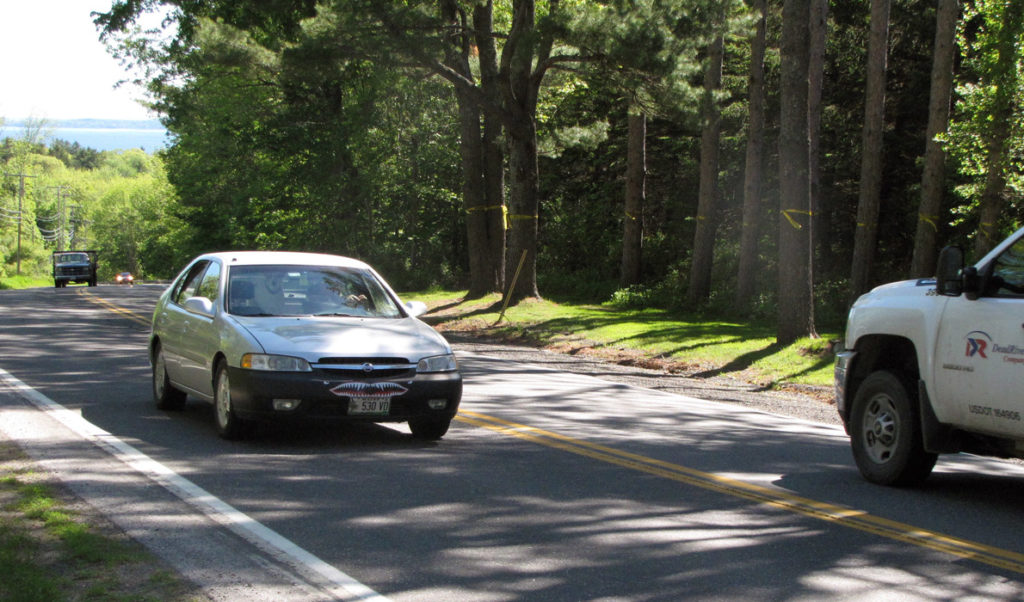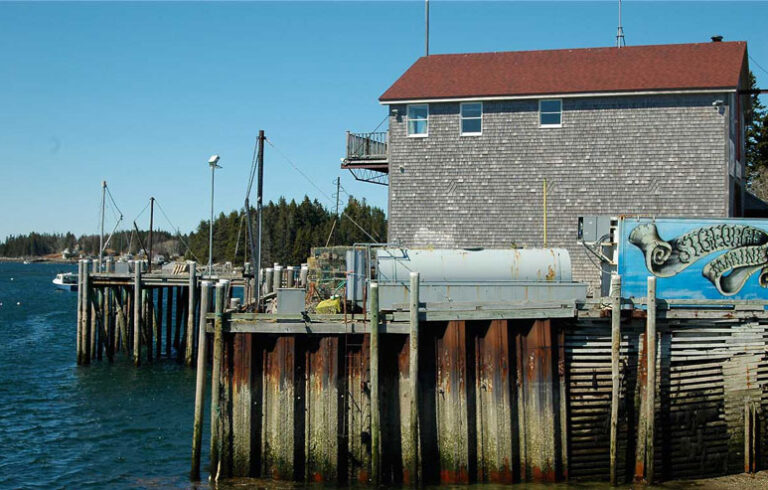It is a familiar dilemma across the country—making roadways safer vs. protecting an area’s aesthetics, which residents are particularly vigilant about in scenic, coastal Maine.
The Department of Transportation is planning a $7.5 million rebuild and widening of 1.5 miles of Route 1 from Camden Hills State Park north to the Lincolnville line. The project also involves replacing and raising the Spring Brook bridge by 7 feet to improve line of sight and replacing the aging Great Brook bridge.
DOT Project Manager Ernie Martin said he is happy with the way the town and the state have worked together to make modifications to the original plan. Those alterations included using less invasive, closed drainage instead of heavily ditched, open drainage in nine locations along the northbound route.
The DOT planned to hold an open house in Camden June 21 to meet with individual homeowners along the construction route, although Martin said there would be no wholesale changes to the design at this point.
“We’ve accommodated quite a bit,” he said. “There will be no global changes made. We are now looking at individual properties to see if there are ways to tweak the design to accommodate the homeowners.”
Anticipating the complexities, the town formed the Route One North Advisory Committee.
The chairman is Robert Falciani, an engineer who lives on the corridor in question, but whose home is not affected by the project.
He agrees with the DOT that Route 1 functions as “a dam between the mountains and the sea,” which leads to drainage issues in many areas. The water runs off the Camden hills across Route 1 to Penobscot Bay.
But Falciani said it is a fallacy that wider roads are safer. Study after study, he said, shows that people drive slower on country roads and speed up on wider, highway-like roads. Records show 23 accidents on that stretch of Route 1 between 2013 and 2015, he said.
“All of them were due to driver negligence,” said Falciani. “The safety factor of this road is below the state standard where the state would have a level of concern.”
His group would like to see the DOT install costlier closed drainage in six other sections of the roadway. In a closed drainage system, the drainage pipe would be under the road and flow into a catch basin.
Arborist Nancy Caudle-Johnson is a member of the Route 1 North Advisory Committee and remembers when DOT proposed reconstructing High Street, that part of Route 1 just north of the village. There were protests, demonstrations—including people perching in trees—and, in the end, changes were made to the original design.
She said the DOT at that time signed a memorandum of understanding that included, among other agreements, promises to replant and preserve trees.
“They can ruin an area in no time flat,” said Caudle-Johnson. “Now they want to adjust the road between Camden Hills and the Lincolnville line—great, clear-cut swaths—because they believe that makes the roads safer. Nature makes people calmer and slows people down.”
The loss of trees will diminish the privacy of some of the dwellings as well as eliminate trees’ inherent features of absorbing noise and carbon dioxide, she said.
Caudle-Johnson said DOT has declined to do a tree inventory and a walk-along to discuss each tree at risk, one by one.
“We don’t feel very successful in being listened to,” she said.
Martin, of DOT, said in addition to agreeing to closed drainage in nine locations, the state has lowered the speed limit and made exceptions to National Highway Safety standards in designing the new roadway.
He said that section of Route 1 is a federal highway and is considered a priority one corridor. As such, Martin said, the standard is 12-foot wide lanes and six-foot shoulders. In order to minimize the impact, he said the design calls for 11-foot travel lanes and five-foot shoulders.
Falciani said DOT can attain its goals and preserve the roadway’s scenic value.
“They have to stop thinking about prescriptive engineering,” he said. “That means you do the same thing everywhere. They need to look at doing performance engineering. In performance engineering, if it’s performing OK, you leave it alone. Performance engineering saves the DOT dollars and allows them to spread the dollars where needed. Prescriptive engineering costs money.”
Select Board member Donald White said the town is eager to see that section of Route 1, which hasn’t been touched since its construction in 1934-1935, upgraded.
He said there have been several accidents in the Spring Brook bridge area due to water flowing off the mountain, into the roadway and then freezing.
“The town supports it and we’re happy they’re going to do it,” White said.
Martin said the DOT hopes to wrap up the design process this year and begin construction in late winter or early spring of 2018. The project likely would be completed by early 2020 or 2021.
He said the DOT has done a good job with outreach and compromise.
“I think the department has reached into the tool box to minimize the impact to local residents and the stakeholders—commuters, businesses, delivery services, tourists, all are users of all of these corridors,” Martin said.





